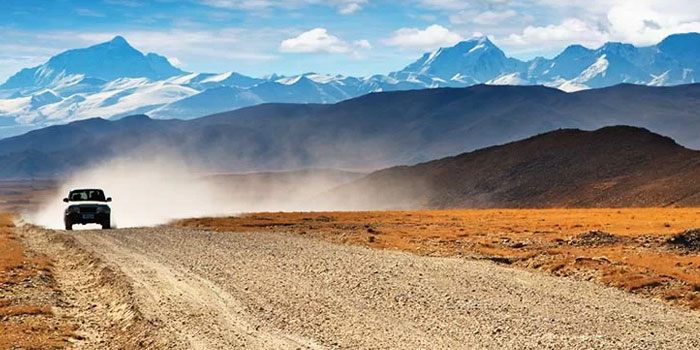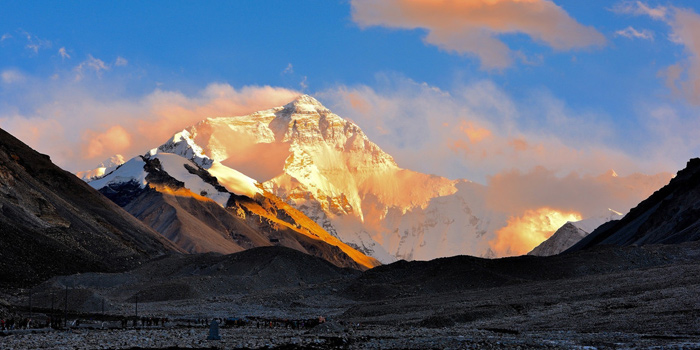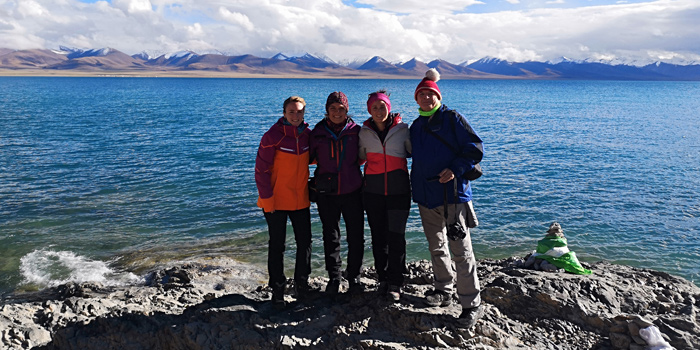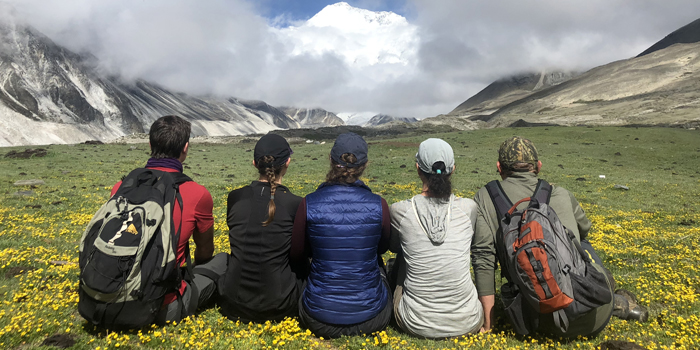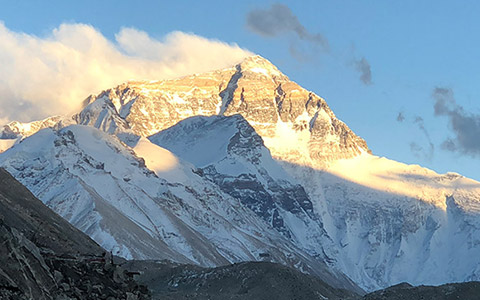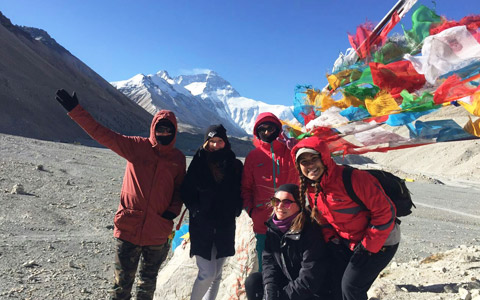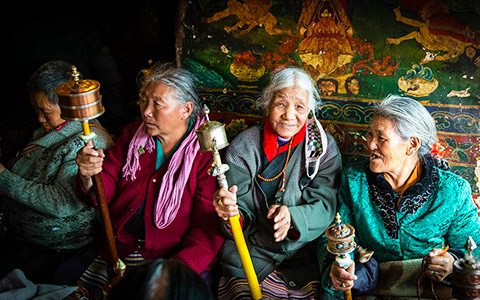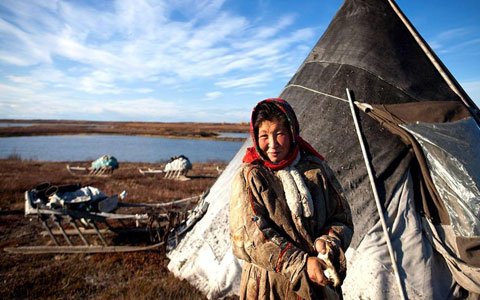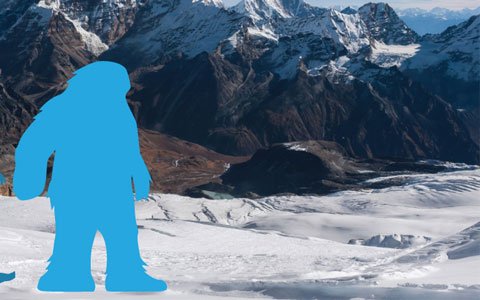Sherpa People: All about Those Mt.Everest Guides Living Deep in the Himalayas
Sherpa people are a mysterious ethnic group living in the deep mountain valleys at the southern foothills of the Himalayas, sustaining themselves through farming and hunting. Despite their small population, they have gained worldwide recognition. This unassuming community holds the record for the highest number of people who have summited Mount Everest. Relying on their courage, tenacity and loyalty, they play essential roles in Mount Everest climbing, carrying equipment, building roads, providing guiding services, and conducting rescues.
In this article, we will delve into the story of this unique community under Himalayan.
 1. Sherpa People are Populated in both China and Nepal
1. Sherpa People are Populated in both China and Nepal
 2. Sherpa People's Appearances are Like both Tibetans and Nepalese
2. Sherpa People's Appearances are Like both Tibetans and Nepalese
 3. Sherpa People's Scarce Population and Unique Language
3. Sherpa People's Scarce Population and Unique Language
 4. Sherpa People's Special Dietary Habits
4. Sherpa People's Special Dietary Habits
 5. Sherpa People's Double House
5. Sherpa People's Double House
 6. Sherpa People's Distinctive Clothing
6. Sherpa People's Distinctive Clothing
 7. Sherpa People's Marriage Customs Different from Modern Society
7. Sherpa People's Marriage Customs Different from Modern Society
 8. Sherpa People's Current Wealthy Life Status
8. Sherpa People's Current Wealthy Life Status
 9. Sherpa People's Risky Livelihood
9. Sherpa People's Risky Livelihood
1. Sherpa People are Populated in both China and Nepal
Sherpa people are named after their habitat. They primarily inhabit the Himalayan region, which includes parts of China (Xizang), Nepal, India, and Bhutan. Legend has it that Sherpas migrated to the foothills of the Himalayas during a famine and conflict in the 13th century, choosing the warm and humid valleys as their homes.
The name "Sherpa" is derived from the Nepali word "sharwa" and the Tibetan word "shyarpa," both of which are related to people living at the base of the mountains. Because of their residence in the Himalayan foothills, they are referred to as "Sherpa" in Chinese. In China, Sherpa people mainly live in the Chen Tang Valley and Zhangmu Valley of the Shigatse region in the Tibet Autonomous Region (Xizang).
2. Sherpa People's Appearances are Like both Tibetans and Nepalese
Most Sherpa people have rugged features and dark skin like Tibetan people. However, there is also a significant number of Sherpas who resemble Nepalese and Indian people more closely, with distinctive facial characteristics such as deep eye sockets, large eyes, and high nose bridges. This diversity may be attributed to the intermingling of different ethnicities over centuries.
As a result, it is often challenging to identify pure Sherpa lineage, as they appear to have both Tibetan and Nepalese characteristics. Generally, Sherpa people are shorter in stature compared to the Tibetan people in the Tingri region, possibly due to their ancestors' engagement in activities such as gathering and living in forested areas.
 Distinctive Appearances of Sherpas
Distinctive Appearances of Sherpas
3. Sherpa People's Scarce Population and Unique Language
Sherpa people are often referred to as the "panda people" due to their limited population, which is only around 40,000, with just over 1,000 living in the Chinese Tibet region. Sherpas typically do not have surnames, only given names, and they practice Tibetan Buddhism, being descendants of Tibetans in the southern foothills of the Himalayas.
They have retained their unique culture and traditions. Sherpa people have their distinct language, which is a fusion of Tibetan and Nepali elements. While their spoken language has more Nepali influences, they use Tibetan in written communication, further indicating their affiliation with the Tibetan ethnic group.
4. Sherpa People's Special Dietary Habits
Sherpa people's staple foods include maize, rice, barley, tsampa, along with potatoes, noodles, and other items. They do not consume raw meat but prefer cooked food, with stir-fried vegetables being a common main dish. When stir-frying, they pay particular attention to the use of spices like fennel, chili, onions, garlic, and curry powder, with chili and fennel being essential ingredients. For drinks, Sherpa people like buttered tea, sweet tea, corn wine, barley wine, yogurt, and liquor.
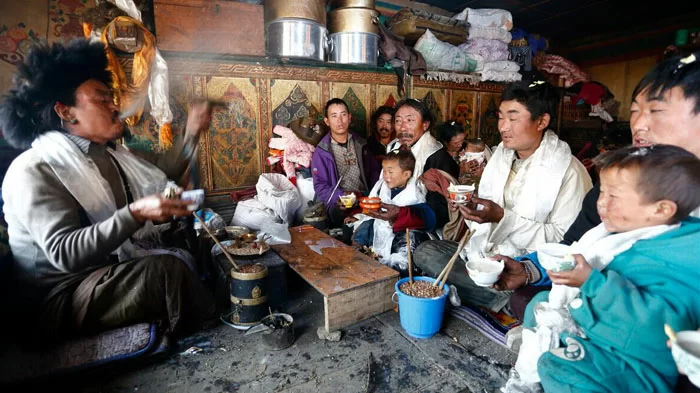 A Sherpa Family
A Sherpa Family
As with Tibetan people, Sherpa people don’t eat dogs, fish, or veal. However, unlike Tibetans, they do not slaughter cattle willingly. The beef they consume in their daily lives usually comes from cows that have died naturally or due to accidents, likely influenced by Nepali traditions.
5. Sherpa People's Double House
Sherpa people's houses are divided into two types: wooden houses and herders' huts. In their daily lives, Sherpa people typically reside in wooden houses, and during the grazing season, they choose herders' huts.
The design of wooden houses features a unique fish-scale roof covered with wooden shingles, although wealthier families may use imported materials like steel for their roofs. Sturdy stone walls surround the houses, with crossbeams supporting the walls. Most houses have two stories, with an average height of about 6 meters. The upper floor usually contains three rooms used for the kitchen, bedroom, and storage, while the lower floor serves as storage for miscellaneous items or livestock.
 A village of Sherpa houses is located at the foot of the Himalayan mountains.
A village of Sherpa houses is located at the foot of the Himalayan mountains.
The interior of their houses is simple, with the kitchen located in the center, equipped with butter churns, aluminum pots, and various cookware and utensils. Each house has a stone-paved hearth for cooking. Sherpa people pay significant attention to cleanliness and tidiness in their living environment, and most households have a bathroom. When moving, these houses are typically passed down to the next generation instead of being sold to others.
Herders' huts are temporary shelters used to provide basic accommodations during grazing periods. These huts are often quite rudimentary but sufficient for basic needs such as rest, cooking, and food storage, protecting them from harsh weather and high-altitude conditions. These huts are typically constructed using natural materials such as wood, canvas, or woolen felt. This design and usage of herders' huts reflect the Sherpa people's traditional way of life in the Himalayan foothills.
6. Sherpa People's Distinctive Clothing
Sherpa people have distinctive clothing. In the border areas of China and Nepal, you can often recognize Sherpa people as they typically wear white woolen double-layered jackets. Men commonly carry knives around their waists, while women wear aprons and adorn themselves with gold or silver earrings.
They have cheerful personalities, enjoy social interactions, and are known for their warm smiles, leaving a lasting impression. These traditional garments reflect the characteristics of Sherpa culture and serve practical and warming functions in the Himalayan region.
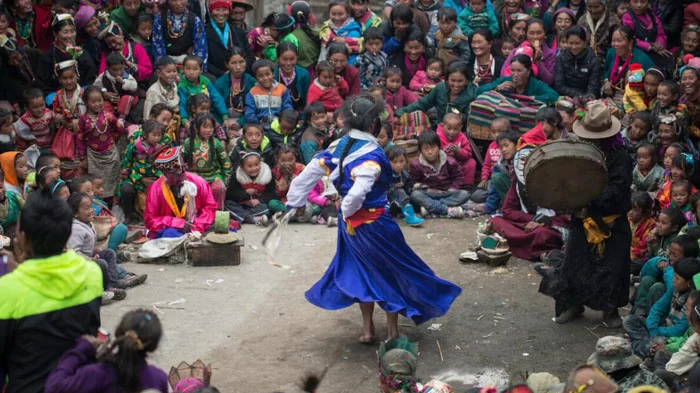 Sherpa people dress in distinctive clothing
Sherpa people dress in distinctive clothing
7. Sherpa People's Marriage Customs Different from Modern Society
Sherpa people have unique marriage customs. If the parents of a young Sherpa couple do not approve of their relationship, they may choose to elope. They hide in the mountains or other secluded places until they receive their parents' blessings and are willing to return home. Some Sherpa communities practice polyandry, where two brothers share one wife. The wife and the two husbands usually have separate living quarters, and it is up to the wife to decide which husband she stays with on any given night.
Additionally, Sherpa people have a tradition of test marriages. Young Sherpas engage in test marriages before formalizing their unions. Affluent families build small houses for their daughters, allowing them to spend private time with their chosen partners without parental interference. After a period of getting to know each other, the young man will come with gifts to propose marriage.
If the couple feels they are not compatible after the test marriage, the girl can continue to date other young men in her small house. This marriage tradition reflects the careful consideration Sherpa people give to the choice of their life partners, emphasizing the importance of nurturing relationships and mutual understanding. Formal marriage is only initiated when both parties are certain they are life-long companions.
8. Sherpa People's Current Wealthy Life Status
Sherpa people benefit from active trade activities in the Sino-Nepal border region and enjoy a relatively high standard of living, even surpassing the general mountainous areas of Nepal. They live in spacious, well-lit, two-story houses equipped with modern facilities like sewing machines, radios, televisions, refrigerators, and elegant furniture.
Each family owns the land, relying on the mild climate, abundant precipitation, and rich forest resources at the foot of the Himalayas. They cultivate crops such as maize, potatoes, finger millet, buckwheat, and legumes, while also collecting caterpillar fungus and various mushrooms from the forests. The income from these agricultural products and medicinal herbs allows each family to lead a relatively prosperous life.
9. Sherpa People's Risky Livelihood
Sherpa people have a unique way of making a living due to their location at the foot of the Himalayas. First and foremost, Sherpas work as guides for the Mount Everest tour. They provide essential support to climbers, carrying heavy loads, building camps, leading treks, and offering crucial assistance for the success of these adventurers. This work is risky, but it is also lucrative, with each Sherpa guide charging as much as $10,000 per climb.
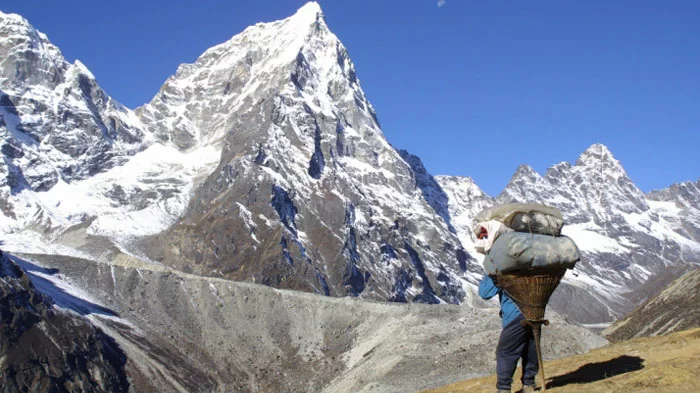 Sherpa people often work as trekking guides in the Mount Everest region.
Sherpa people often work as trekking guides in the Mount Everest region.
In addition to guiding, Sherpa people engage in collecting activities, gathering fruits, caterpillar fungus, mushrooms, and wild honey. They use wild beeswax to craft Buddha statues, creating unique art pieces. The collected wild honey is used for beauty and medicinal purposes and is highly valuable.
In recent years, the Himalayan foothills, such as the Gama Valley, Chen Tang Valley, and Jilong Valley, have become popular destinations for hikers and trekkers. These valleys offer stunning landscapes, including canyons, meadows, forests, and snow-covered peaks.
In particular, Gama Valley provides a unique opportunity to view the eastern face of Mount Everest, which stands at an altitude of over 8,000 meters. Sherpa people are actively involved in providing services to tourists, including offering horses, serving as guides, and providing life services in this treasured Himalayan region.
10. Sherpa People’s Festivals and Celebrations
Sherpas celebrate a multitude of vibrant festivals that reflect the richness of their culture. One such festival is Dumje, which takes place in June and spans a week. This celebration is dedicated to seeking wealth, prosperity, good health, and overall well-being for the Sherpa community. It involves regular visits to monasteries where Sherpas fervently pray for these blessings to be bestowed upon them.
In late February, another significant festival known as Losar marks the Tibetan New Year. This festival is celebrated with great enthusiasm, resembling New Year celebrations in various other cultures. It is a time of joyful festivities filled with dancing, singing, and merrymaking, creating an atmosphere of joy and togetherness among the Sherpa community.
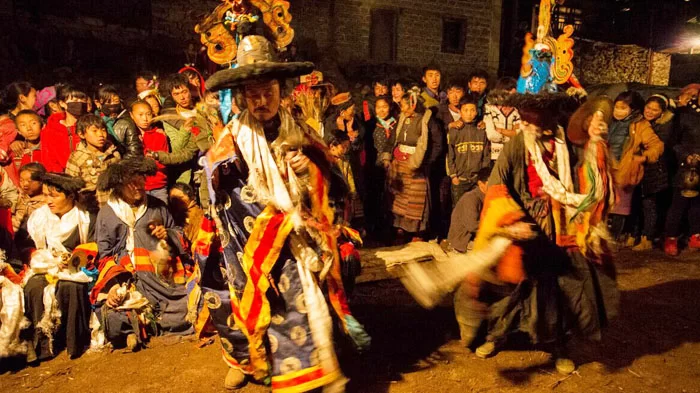 Sherpa People Celebrate the Dumje Festival
Sherpa People Celebrate the Dumje Festival
Mani Rimdu, a colorful and spiritually significant festival, is celebrated four times a year. During this festival, monks don strikingly vibrant costumes and masks, symbolically representing deities and demons. Through intricate spiritual dances, they aim to ward off evil forces and invoke blessings.
While many Sherpa festivals involve indulgence in festivities and drinking, Nyungne stands as an exception. During this three-day festival, participants refrain from alcohol and often undertake fasting. It is a time for self-mortification and seeking redemption for any wrongdoings committed throughout the year. People visit monasteries, recite sacred hymns, and connect with the lamas during this period.
Visiting Tibet during any of these Sherpa festivals provides a unique opportunity to experience the rich tapestry of their culture and witness the fervor with which these celebrations are embraced by the Sherpa community.
Conclusion
If you want to learn more about the Sherpa people, consider a Tibet tour. Sherpa people exemplify the spirit of the Himalayas with their courage, resilience, and loyalty. They are indispensable companions for climbers and tourists exploring this region, creating unforgettable memories for them. Their way of life reflects deep insights into nature and a deep appreciation for traditional culture.
If you are captivated by the stories and qualities of the Sherpa people, you might consider joining a trekking adventure to the eastern slope of Tibet Mount Everest in the Gama Valley. Join us on a journey to Tibet to gain a deeper understanding of this unique ethnic group and hear more fascinating stories about the Sherpa people.

With exceptional passion and outstanding leadership, Mrs. Catherine has dedicated herself to Tibet inbound tourism and China tour for 15 years. As one of the handful females who see great potential of Chinese inbound tourism, Catherine has made great contribution to promoting Tibet tourism and enhancing the employment of Tibetans and prosperity of local Tibetan community.
Over the years, she travelled overseas with Tibet Tourism Bureau many times to promote Tibet tourism. Currently, Catherine works as the marketing director of Tibet Vista, an opinion leader behind the whole team of Tibet Vista.
Related Articles & Posts
Most Popular Tibet Tour Packages
-

Lhasa - Gyantse - Shigatse - Everest Base Camp - Shigatse - Lhasa
USD939
View Details -

Lhasa - Gyantse - Shigatse - E.B.C - Saga - Kailash Trek - Darchen - Lake Manasarovar - Saga - Gyirong - Tingri - Lhasa
USD2059
View Details -

10 Days Lhasa to Everest Base Camp and Namtso Lake Small Group Tour
Lhasa - Gyantse - Shigatse - EBC - Shigatse - Lhasa - Namtso Lake - Damxung - Lhasa
USD1289
View Details -

8 Days Driving Across Himalaya Overland Adventure from Kathmandu to Lhasa
Kathmandu - Gyirong - Everest Base Camp - Tingri - Shigatse - Gyantse - Lhasa
USD1069
View Details -

4 Days Lhasa Impression Small Group Tour: Explore the Heart of Tibet and Mingle with the Locals
Lhasa
USD509
View Details -

Lhasa - Gyantse - Shigatse - Everest Base Camp - Gyirong - Kathmandu
USD979
View Details -

Lhasa - Gyantse - Shigatse- Lhasa
USD799
View Details -

13 Day Lhasa, Mt. Everest, Mt. Kailash, Lake Manasarovar and Kathmandu Adventure Tour
Lhasa - Gyantse - Shigatse - EBC - Saga - Darchen - Kailash Trek - Darchen - Saga - Gyirong - Kathmandu
USD2059
View Details


.jpg)



